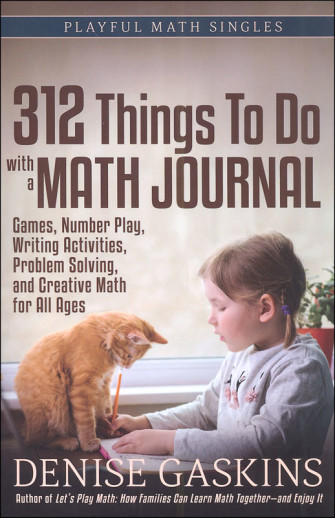We use cookies to make your experience better. To comply with the new e-Privacy directive, we need to ask for your consent to set the cookies. Learn more.
312 Things To Do with a Math Journal
In a math journal, children explore their own ideas about numbers, shapes, and patterns through drawing or writing in response to a question. Journaling teaches them to see with mathematical eyes – not just to remember what adults tell them, but to create their own math. Includes games, number play, writing activities, problem solving, and creative math for all ages. 197 pgs, pb. ~Amber
Journaling encourages students to develop a rich mathematical mindset. They begin to see connections and make sense of math concepts. They grow confident in their ability to think through new ideas. All they need is a piece of paper, a pencil, and a good prompt to launch their mathematical journey.
312 Things To Do with a Math Journal by Denise Gaskins includes number play prompts, games, math art, story problems, mini-essays, geometry investigations, brainteasers, number patterns, research projects, and much more.
These activities work at any grade level, and most can be enjoyed more than once. It doesn't matter whether your students are homeschooled or in a classroom, distance-learning, or in person. Everyone can enjoy the experience of playing around with math.
Sometimes rote memorization and workbooks aren't enough to help a child remember numbers and math concepts; a game is sometimes the key to practicing and remembering math concepts. Denise Gaskins is a veteran homeschool mom who developed the series Math You Can Play. The books are full of games that can be played by your family to help children grasp the important concepts needed to be successful in math. Using items like playing cards, dominoes, dice, poker chips, and even a cribbage board, these games help your children learn and practice their math. Each book in this series begins with the learning strategies and includes resources & references to expand on the information in the book.
| Product Format: | Paperback |
|---|---|
| Brand: | TableTop Academy Press |
| Grades: | 3-AD |
| ISBN: | 9781892083616 |
| Length in Inches: | 9 |
| Width in Inches: | 6 |
| Height in Inches: | 0.4375 |
| Weight in Pounds: | 0.65 |

